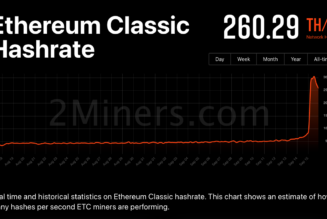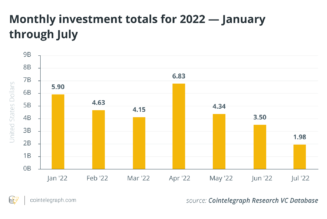
On Aug 9, automated market maker Curve Finance took to Twitter to warn users of an exploit on its site. The team behind the protocol noted that the issue, which appeared to be an attack from a malicious actor, was affecting the service’s nameserver and frontend.
Don’t use https://t.co/vOeMYOTq0l site – nameserver is compromised. Investigation is ongoing: likely the NS itself has a problem
— Curve Finance (@CurveFinance) August 9, 2022
Curve stated via Twitter that its exchange — which is a separate product — appeared to be unaffected by the attack, as it uses a different DNS provider.
However, the issue was quickly addressed by the team. An hour after the initial warning, Curve said it had both found and reverted the issue, directing users to have approved any contracts on Curve in the last few hours to revoke them “immediately.”
The issue has been found and reverted. If you have approved any contracts on Curve in the past few hours, please revoke immediately. Please use https://t.co/6ZFhcToWoJ for now until the propagation for https://t.co/vOeMYOTq0l reverts to normal
— Curve Finance (@CurveFinance) August 9, 2022
Curve noted that most likely the domain name system (DNS) server provider ‘iwantmyname’ was hacked, adding that it has subsequently changed its nameserver.
A nameserver works like a directory that translates domain names into IP addresses.
While the exploit was ongoing, Twitter user LefterisJP speculated that the alleged attacker had likely utilized DNS spoofing to execute the exploit on the service:
It’s DNS spoofing. Cloned the site, made the DNS point to their ip where the cloned site is deployed and added approval requests to a malicious contract.
— Lefteris Karapetsas | Hiring for @rotkiapp (@LefterisJP) August 9, 2022
Other participants in the DeFi space quickly took to Twitter to spread the warning to their own followers, with some noting that the alleged thief appears to have stolen more than $573K USD.
Alert to all @CurveFinance users, their frontend has been compromised!
Do not interact with it until further notice!
It appears around $570k stolen so far #defi #crypto $crv
— Assure DeFi (@AssureDefi) August 9, 2022
Back in July, analysts suggested that they were favorably eyeing Curve Finance, despite the market downturn which continues to affect the larger DeFi space. Among the reasons cited by researchers at Delphi Digital for their bullishness, they specifically called out the platform’s yield opportunities, the demand for CRV deposits, and the protocol’s revenue generation from stablecoin liquidity.
This followed the platform’s release of a new “algorithm for exchanging volatile assets” in June, which promised to allow low-slippage swaps between “volatile” assets. These pools use a combination of internal oracles relying on Exponential Moving Averages (EMAs) and a bonding curve model, previously deployed by popular AMMs such as Uniswap.
Update: Added announcement from Curve Finance that the issue has been resolved, pointing to its name server as the likely culprit for the exploit.
 [flexi-common-toolbar] [flexi-form class=”flexi_form_style” title=”Submit to Flexi” name=”my_form” ajax=”true”][flexi-form-tag type=”post_title” class=”fl-input” title=”Title” value=”” required=”true”][flexi-form-tag type=”category” title=”Select category”][flexi-form-tag type=”tag” title=”Insert tag”][flexi-form-tag type=”article” class=”fl-textarea” title=”Description” ][flexi-form-tag type=”file” title=”Select file” required=”true”][flexi-form-tag type=”submit” name=”submit” value=”Submit Now”] [/flexi-form]
[flexi-common-toolbar] [flexi-form class=”flexi_form_style” title=”Submit to Flexi” name=”my_form” ajax=”true”][flexi-form-tag type=”post_title” class=”fl-input” title=”Title” value=”” required=”true”][flexi-form-tag type=”category” title=”Select category”][flexi-form-tag type=”tag” title=”Insert tag”][flexi-form-tag type=”article” class=”fl-textarea” title=”Description” ][flexi-form-tag type=”file” title=”Select file” required=”true”][flexi-form-tag type=”submit” name=”submit” value=”Submit Now”] [/flexi-form]










Tagged: crypto blog, Crypto news, cryptocurrency exchange, cybersecurity, Decentralization, Decentralized Exchange, technology, web3